
- When I Grow Too Old To Dream (1934) composed by Sigmund Romberg and Oscar Hammerstein II, featured in the 1935
 musical film, The Night is Young, with Ramon Novarro. It is a touching song about an old couple’s devotion and about memory, as one spouse sings about remembering the other after the other is gone, even if the survivor can remember nothing else. Among the most famous versions of the song are Nat King Cole’s, Linda Ronstadt’s, Doris Day’s, and the Everly Brothers’.
musical film, The Night is Young, with Ramon Novarro. It is a touching song about an old couple’s devotion and about memory, as one spouse sings about remembering the other after the other is gone, even if the survivor can remember nothing else. Among the most famous versions of the song are Nat King Cole’s, Linda Ronstadt’s, Doris Day’s, and the Everly Brothers’.
2. Old Folks, introduced by the Larry Clinton Orchestra in 1938, composed by Willard Robison and Dedette Lee Hill, it is one of  the few hits Robison ever had. “A Cottage for Sale” is the other. Most listeners today would find the lyrics a bit patronizing about the life of an old man called “Old Folks.” (“You needn’t be ashamed of him.”) Among the most noted versions of it are Lou Rawls’s, Miles Davis’s, and Mildred Bailey’s. Robison’s tune is very popular with jazz musicians, and the version on Keith Jarrett’s 1990 album, “The Cure,” is particularly outstanding, lyrical and gripping without ever being sentimental. Robison’s tune is not to be confused with Jacques Brel’s “Old Folks (Les Vieux)” which American audiences grew to love from the 1968 Off-Broadway show, Jacques Brel is Alive and Well and Living in Paris. Brel’s “Old Folks” was most famously sung for American audiences by John Denver. The translated lyrics are better, more richly poetic than the lyrics for Robison’s tune but still audiences may find them patronizing and even piteous. The problem with the lyrics to both songs is that they give the listener that the old are self-pitying because the lyrics are so full of pity. Unlike “When I Grow Too Old to Dream,” the singer of either Robison’s or Brel’s “Old Folks” is not old himself or herself. Neither Brel nor Robison is to be confused with Mike Reid’s” Old Folks,” which was a big country hit for Ronnie Milsap. The narrative frame of this song is the same as the other two: a clearer younger narrator is singing to the audience about an older person (Robison) and generally about old age (Brel). (“One day we will be old folks too.”) In sensibility, the Milsap song is closer to Robison’s tune than Brel’s, although with a line like “Blessed is the child of yesterday,” the song succeeds, like the other two, in condescending while it romanticizes.
the few hits Robison ever had. “A Cottage for Sale” is the other. Most listeners today would find the lyrics a bit patronizing about the life of an old man called “Old Folks.” (“You needn’t be ashamed of him.”) Among the most noted versions of it are Lou Rawls’s, Miles Davis’s, and Mildred Bailey’s. Robison’s tune is very popular with jazz musicians, and the version on Keith Jarrett’s 1990 album, “The Cure,” is particularly outstanding, lyrical and gripping without ever being sentimental. Robison’s tune is not to be confused with Jacques Brel’s “Old Folks (Les Vieux)” which American audiences grew to love from the 1968 Off-Broadway show, Jacques Brel is Alive and Well and Living in Paris. Brel’s “Old Folks” was most famously sung for American audiences by John Denver. The translated lyrics are better, more richly poetic than the lyrics for Robison’s tune but still audiences may find them patronizing and even piteous. The problem with the lyrics to both songs is that they give the listener that the old are self-pitying because the lyrics are so full of pity. Unlike “When I Grow Too Old to Dream,” the singer of either Robison’s or Brel’s “Old Folks” is not old himself or herself. Neither Brel nor Robison is to be confused with Mike Reid’s” Old Folks,” which was a big country hit for Ronnie Milsap. The narrative frame of this song is the same as the other two: a clearer younger narrator is singing to the audience about an older person (Robison) and generally about old age (Brel). (“One day we will be old folks too.”) In sensibility, the Milsap song is closer to Robison’s tune than Brel’s, although with a line like “Blessed is the child of yesterday,” the song succeeds, like the other two, in condescending while it romanticizes.
3. Old Folks at Home, composed by Stephen Foster in 1851, is the state song of Florida, where the Sewanee River is located. It is also, without question, the most evocative song about homesickness in all of American popular music. It manages to say something deeper about the human condition than its maudlin and self-pitying lyrics might lead to suspect it could. Clearly, the song shows that the romantic yearnings about life in the South predated the moonlight-and-magnolia writings of Thomas Nelson Page and Joel Chandler Harris, among others. The song is about a young man (the singer could be a woman as well) rootless and forlorn in the larger world who wishes he (or she) could return to the plantation and “the old folks at home,” a peaceful past that can exist only in the past, only as a memory. It is a song about spiritual and physical exile. The song is the narrator having aged out of his childhood and youth at home as much as it is about the settled order of the old folks one left behind. Tom Roush sings the song with the original lyrics. Paul Robeson’s version is also noteworthy. Robeson sings the line, “Oh, darkeys, how my heart grows weary,” just as it is written in the original.
also, without question, the most evocative song about homesickness in all of American popular music. It manages to say something deeper about the human condition than its maudlin and self-pitying lyrics might lead to suspect it could. Clearly, the song shows that the romantic yearnings about life in the South predated the moonlight-and-magnolia writings of Thomas Nelson Page and Joel Chandler Harris, among others. The song is about a young man (the singer could be a woman as well) rootless and forlorn in the larger world who wishes he (or she) could return to the plantation and “the old folks at home,” a peaceful past that can exist only in the past, only as a memory. It is a song about spiritual and physical exile. The song is the narrator having aged out of his childhood and youth at home as much as it is about the settled order of the old folks one left behind. Tom Roush sings the song with the original lyrics. Paul Robeson’s version is also noteworthy. Robeson sings the line, “Oh, darkeys, how my heart grows weary,” just as it is written in the original.
4. Old Black Joe, composed by Stephen Foster, published in 1853, is another of the plaintive songs of the plantation, this time told
from the point of view of a faithful but aged black servant who hears the gentle voices calling. “I’m coming, for my head is bending low.”) Interestingly, the song is not written in dialect. It is a stereotypical view of the old black servant from the point of view of a white romanticizing plantation life and servitude itself, but what is interesting is that in 19th-century America one of the most common and important icons for the aged was the black male servant. Among the notable versions are Jerry Lee Lewis, Paul Robeson, and Sons of the Pioneers.
5. Tower of Time, composed by singer/actor/songwriter Oscar Brown, Jr. and featured on his “Mr. Oscar Brown, Jr. Goes to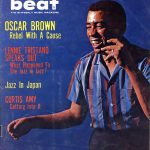 Washington” album recorded live in late 1964. This is one of my favorite songs about aging. The lyrics are brilliant. As the singer/narrator says of the old man on the park bench: “Who knows if you’ve won all the races you’ve run.” Or as he says of himself: “What treasure then will I hold when I grow old?”
Washington” album recorded live in late 1964. This is one of my favorite songs about aging. The lyrics are brilliant. As the singer/narrator says of the old man on the park bench: “Who knows if you’ve won all the races you’ve run.” Or as he says of himself: “What treasure then will I hold when I grow old?”
6. Old Rockin’ Chair, composed in 1929 by Hoagy Carmichael, has been performed by Louis Armstrong and Jack Teagarden, Maria Muldaur, Mildred Bailey, and the composer himself. The Armstrong/Teagarden version is the best. Carmichael was a wonderful songwriter. He was also a fairly decent actor. You can catch him in films like To Have and Have Not (1944) and Young Man With a Horn (1950). He was also quite a bit better in the early 1960s TV western Laramie than Spring Byington who replaced him after the first season, although he did not seem entirely comfortable with the role. The song is a dialogue between an aged father, trapped in a rocking chair with his cane by his side, and his son, who is told to fetch some gin and threatened with a whipping. It has a bluesy, vernacular feel to it that makes both comic and socially graphic in its honesty about a man who hates getting old. Pianist Fats Waller’s “Old Grand Dad,” recorded in 1940, is a bit in the same vein as “Old Rockin’ Chair” except it is funnier.
Maria Muldaur, Mildred Bailey, and the composer himself. The Armstrong/Teagarden version is the best. Carmichael was a wonderful songwriter. He was also a fairly decent actor. You can catch him in films like To Have and Have Not (1944) and Young Man With a Horn (1950). He was also quite a bit better in the early 1960s TV western Laramie than Spring Byington who replaced him after the first season, although he did not seem entirely comfortable with the role. The song is a dialogue between an aged father, trapped in a rocking chair with his cane by his side, and his son, who is told to fetch some gin and threatened with a whipping. It has a bluesy, vernacular feel to it that makes both comic and socially graphic in its honesty about a man who hates getting old. Pianist Fats Waller’s “Old Grand Dad,” recorded in 1940, is a bit in the same vein as “Old Rockin’ Chair” except it is funnier.
7. When I’m Sixty-Four, composed by Paul McCartney and featured on the Beatles’ 1967 album, Sgt. Pepper’s Lonely Hearts  Club Band. Probably the most famous song about aging for baby boomers since it appeared on the album that is considered the greatest pop music album of all time for that generation. As of 2016, McCartney is 73 and, obviously, someone still needs him and someone is still feeding him. He was 25 when the tune was released, and 16 when he wrote it, which to him at the time meant that 64 must have seemed like being 100 years old. His father had turned 64 when the song was released. Like some tunes about old age, it is also a tune about a relationship, about marriage. Songwriters seem to think that people grow old with a partner. The song is not sentimental like, say, “When I Grow Too Old to Dream.” It is in fact rather cynical in how the young narrator speaks of the durability of his relationship, with a rather cheerless view of aging in a bourgeois, bureaucratic society.
Club Band. Probably the most famous song about aging for baby boomers since it appeared on the album that is considered the greatest pop music album of all time for that generation. As of 2016, McCartney is 73 and, obviously, someone still needs him and someone is still feeding him. He was 25 when the tune was released, and 16 when he wrote it, which to him at the time meant that 64 must have seemed like being 100 years old. His father had turned 64 when the song was released. Like some tunes about old age, it is also a tune about a relationship, about marriage. Songwriters seem to think that people grow old with a partner. The song is not sentimental like, say, “When I Grow Too Old to Dream.” It is in fact rather cynical in how the young narrator speaks of the durability of his relationship, with a rather cheerless view of aging in a bourgeois, bureaucratic society.
8. I Ain’t Getting Older, I’m Getting Better, recorded in 1978, composed and performed by soul music veteran Rufus Thomas. Thomas is remembered for two things: his daughter, Carla, who did some great duets with Otis Redding, and a dance called the Funky Chicken. This was not one of his stronger efforts, but the song is nice paean to aged masculine virility as funny braggadocio.
Thomas is remembered for two things: his daughter, Carla, who did some great duets with Otis Redding, and a dance called the Funky Chicken. This was not one of his stronger efforts, but the song is nice paean to aged masculine virility as funny braggadocio.
9. The Little Old Lady From Pasadena, recorded in 1964 by Jan and Dean and composed by Jan Berry, Don Altfeld, and Roger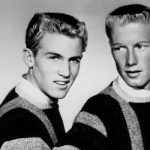 Christian. Who would have thought the surf-and-hot-rod sound of the Beach Boys would produce one of rock and roll’s first anti-ageism songs. Go, Granny, Go. “Everybody’s sayin’ that there’s nobody meaner” than this speed freak old woman with the Super Stock Dodge. A clever, amusing song that is dated in one sense but has managed, ironically and strikingly, to age well.
Christian. Who would have thought the surf-and-hot-rod sound of the Beach Boys would produce one of rock and roll’s first anti-ageism songs. Go, Granny, Go. “Everybody’s sayin’ that there’s nobody meaner” than this speed freak old woman with the Super Stock Dodge. A clever, amusing song that is dated in one sense but has managed, ironically and strikingly, to age well.
10. September Song, composed by Kurt Weill and Maxwell Anderson for the 1938 Broadway musical Knickerbocker Holiday, reintroduced in the 1950 film, September Affair. Among the noted performers are Frank Sinatra, the Platters, Walter Huston (for whom the song was originally written), and Pat Boone, among others. It is one of the few songs about aging—an older man is courting a younger woman and explains that he can no longer play “the waiting game”—that is considered a standard and part of the Great American Songbook. A companion song—about a man looking back at past romances—is “It Was a Very Good Year” composed by Ervin Drake in 1961 and most famously sung by Frank Sinatra. A good song about a younger man preferring old women is Lightnin’ Hopkins’s “Old Woman Blues.”
reintroduced in the 1950 film, September Affair. Among the noted performers are Frank Sinatra, the Platters, Walter Huston (for whom the song was originally written), and Pat Boone, among others. It is one of the few songs about aging—an older man is courting a younger woman and explains that he can no longer play “the waiting game”—that is considered a standard and part of the Great American Songbook. A companion song—about a man looking back at past romances—is “It Was a Very Good Year” composed by Ervin Drake in 1961 and most famously sung by Frank Sinatra. A good song about a younger man preferring old women is Lightnin’ Hopkins’s “Old Woman Blues.”
11. When You Are Old and Grey, composed by Tom Lehrer and released in 1960 on the album, Revisited, is assuredly the most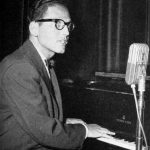 wickedly funny, unsentimental, utterly clever song about aging ever written. It will make you laugh out loud.
wickedly funny, unsentimental, utterly clever song about aging ever written. It will make you laugh out loud.
12. When We Were Young, performed by British soul singer Adele and composed by Adele and Tobias Jesso, Jr. It is one of the monster hits of 2016, a song, as many songs about aging are, about looking back at a time when the narrator is younger, trying to re-capture a moment. It is not about being old as much as it is about getting older, middle-aged, perhaps.
monster hits of 2016, a song, as many songs about aging are, about looking back at a time when the narrator is younger, trying to re-capture a moment. It is not about being old as much as it is about getting older, middle-aged, perhaps.
13. 7 Years, composed and performed by Danish pop band Lukas Graham, is the monster pop hit of 2015-2016. I assume everyone on the planet has heard it. A gorgeous, moving tune with well-conceived lyrics and a great melody, all about the passages in life, from 7 to 60.
on the planet has heard it. A gorgeous, moving tune with well-conceived lyrics and a great melody, all about the passages in life, from 7 to 60.
14. That Silver Haired Daddy of Mine, written by Gene Autry and Jimmy Long in 1931, was Autry’s first big hit. This is a far  different song about a dialogue between a son and his aged father than “Old Rockin’ Chair.” Carmichael’s song gives us a comically self-pitying song about a mean, alcoholic father. Autry sings as the repentant son, who regrets having neglected his father and causing him “heartache.” This song is something like the cowboy version of the 1920s tune, “My Yiddish Mama.” “That Silver Haired Daddy of Mine” was covered by several famous country singers including Jim Reeves, Johnny Cash, and the Everly Brothers.
different song about a dialogue between a son and his aged father than “Old Rockin’ Chair.” Carmichael’s song gives us a comically self-pitying song about a mean, alcoholic father. Autry sings as the repentant son, who regrets having neglected his father and causing him “heartache.” This song is something like the cowboy version of the 1920s tune, “My Yiddish Mama.” “That Silver Haired Daddy of Mine” was covered by several famous country singers including Jim Reeves, Johnny Cash, and the Everly Brothers.
15. Grandma’s Hands, composed and performed by Bill Withers, and released in 1971. The song, with its gospel, bluesy lilt was inspired by Withers’s own grandmother. It romanticizes while retaining a touching sort of realism. In some ways, this song stars the stereotypical black grandmother, or black matriarch made into an icon, but it also stamps the roots of black culture as a spiritually and emotionally expansive age-ordered typology, which may be why this song was so incredibly popular with the black undergraduates with whom I went to college. It spoke deeply.
inspired by Withers’s own grandmother. It romanticizes while retaining a touching sort of realism. In some ways, this song stars the stereotypical black grandmother, or black matriarch made into an icon, but it also stamps the roots of black culture as a spiritually and emotionally expansive age-ordered typology, which may be why this song was so incredibly popular with the black undergraduates with whom I went to college. It spoke deeply.
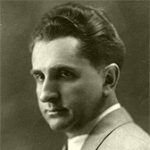 16. Life Begins at Forty is not exactly a tribute to old age as it is to middle age. Or, more precisely, it is about the advantages of aging over youth. Life Begins at Forty was a 1932 best-selling self-help by Walter B. Pitkin. The most famous song associated with this title is Jewish singer Sophie Tucker’s 1937 musical monologue about the clear advantages of being a mature woman written by lyricist Jack Yellin and composer Ted Shapiro, both of whom collaborated frequently with Tucker. In some respects, Peggy Lee’s 1960s hit tune, ”Is That All There Is?”, written by Jerry Leiber and Mike Stoller, is a bit reminiscent of the Tucker tune as a musical monologue, except that Lee’s song is a great deal more world weary and cynical: the song you sing after you realize that 40, or any other “golden” age, is not all it is cracked up to be. In this respect, Lee’s tune is the opposite of Tucker’s. Australian singer Judy Small has her own “Life Begins at Forty,” that expresses some of the same sentiments as the Tucker tune but is delivered as a song, not a monologue. Shortly before he died, John Lennon wrote a tune called “Life Begins at Forty” which he intended to give to former bandmate Ringo Starr.
16. Life Begins at Forty is not exactly a tribute to old age as it is to middle age. Or, more precisely, it is about the advantages of aging over youth. Life Begins at Forty was a 1932 best-selling self-help by Walter B. Pitkin. The most famous song associated with this title is Jewish singer Sophie Tucker’s 1937 musical monologue about the clear advantages of being a mature woman written by lyricist Jack Yellin and composer Ted Shapiro, both of whom collaborated frequently with Tucker. In some respects, Peggy Lee’s 1960s hit tune, ”Is That All There Is?”, written by Jerry Leiber and Mike Stoller, is a bit reminiscent of the Tucker tune as a musical monologue, except that Lee’s song is a great deal more world weary and cynical: the song you sing after you realize that 40, or any other “golden” age, is not all it is cracked up to be. In this respect, Lee’s tune is the opposite of Tucker’s. Australian singer Judy Small has her own “Life Begins at Forty,” that expresses some of the same sentiments as the Tucker tune but is delivered as a song, not a monologue. Shortly before he died, John Lennon wrote a tune called “Life Begins at Forty” which he intended to give to former bandmate Ringo Starr.
17. The Last Rose of Summer, words by Irish poet and songwriter Thomas Moore, set to a traditional tune that was transcribed by Edward Bunting. Moore wrote the words in 1805 and the song was published in 1813. It became one of the biggest tear jerkers of the 19th century, one of those crying-in-your-beer songs that all the opera singers loved. Aging is quite a bit like being the last rose of summer, one’s “lovely companions are faded and gone.” This is truly the loneliness of the long distance runner or of the longest living thing that, too, will die. Other versions include Nina Simone, Charlotte Church, and Joan Sutherland.
Edward Bunting. Moore wrote the words in 1805 and the song was published in 1813. It became one of the biggest tear jerkers of the 19th century, one of those crying-in-your-beer songs that all the opera singers loved. Aging is quite a bit like being the last rose of summer, one’s “lovely companions are faded and gone.” This is truly the loneliness of the long distance runner or of the longest living thing that, too, will die. Other versions include Nina Simone, Charlotte Church, and Joan Sutherland.
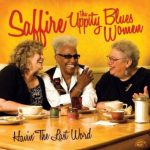 18. I’m Growing Older is a song by Saffire, The Uppity Blues Women, a three-women band from Washington, D.C., formed in 1987, that specializes in comic novelty songs as well as blues songs associated with famous women blues singers like Memphis Minnie, Ida Cox, Big Mama Thornton, and Koko Taylor. Their original material, such as “I’m growing older,” is both funny and feminist, a hymn to not only a woman accepting old age but reveling in it. To use an old-fashioned word, the song would be considered sassy, which is basically Saffire’s shtick. You might think of this band as a kind of interesting counterpart to a group like Sweet Honey in the Rock.
18. I’m Growing Older is a song by Saffire, The Uppity Blues Women, a three-women band from Washington, D.C., formed in 1987, that specializes in comic novelty songs as well as blues songs associated with famous women blues singers like Memphis Minnie, Ida Cox, Big Mama Thornton, and Koko Taylor. Their original material, such as “I’m growing older,” is both funny and feminist, a hymn to not only a woman accepting old age but reveling in it. To use an old-fashioned word, the song would be considered sassy, which is basically Saffire’s shtick. You might think of this band as a kind of interesting counterpart to a group like Sweet Honey in the Rock.
